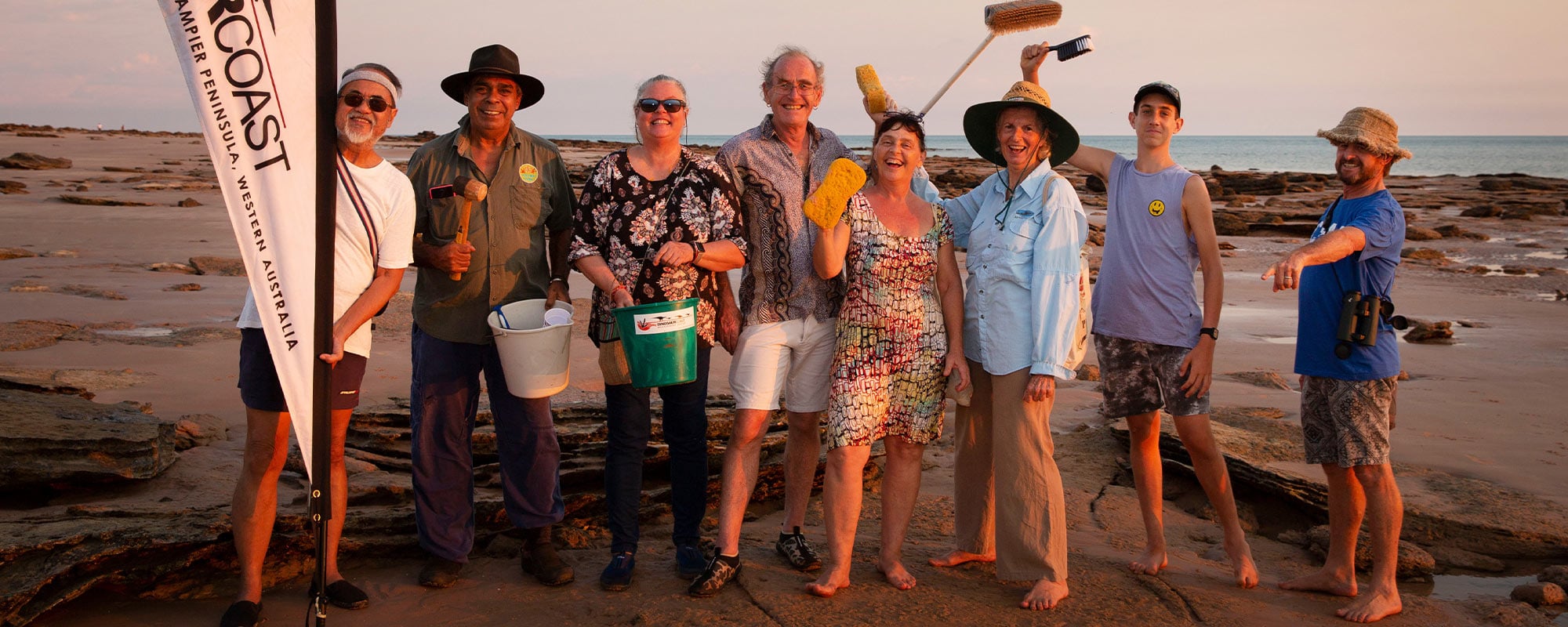
Working together to protect and research the dinosaur tracks
The Dinosaur Coast Management Group (DCMG) is a not-for-profit organisation, formed in 2015 to protect and promote the dinosaur tracks of the Dampier Peninsula and to educate the public about their cultural and scientific importance.
The group’s vision is:
- The Dinosaur Coast will become internationally renowned for its cultural heritage and its scientific and tourism values.
DCMG is proud to be working with Traditional Owners from across the Kimberley, and scientists from The University of Queensland to ensure plans and activities are culturally sensitive and scientifically valid.
DCMG Annual Report
Download the 2023 Dinosaur Coast Management Group Annual Report (.pdf).
Management Committee
Meet the Scientists
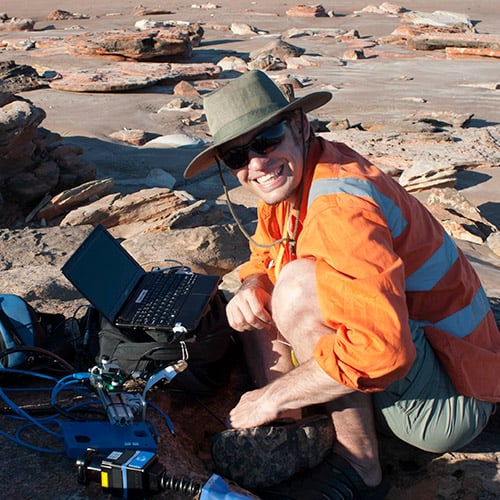
Dr Michael Bosse
Dr Michael Bosse is a robotics expert whose research interests focus on simultaneous localisation and mapping and real-time perception for field robotics. Between 2006 and 2014, Michael Bosse was a Robotics Sensor Integration Specialist and a Senior Research Scientist with the Autonomous Systems Laboratory at CSIRO, where together with Dr Robert Zlot he developed the Zebedee 3D Mapping System. Between 2014 and 2017, Zebedee has been used for digital mapping of tracksites along the Dinosaur Coast. Michael is now associated with ETH and Microsoft Research, both in Zurich, Switzerland.
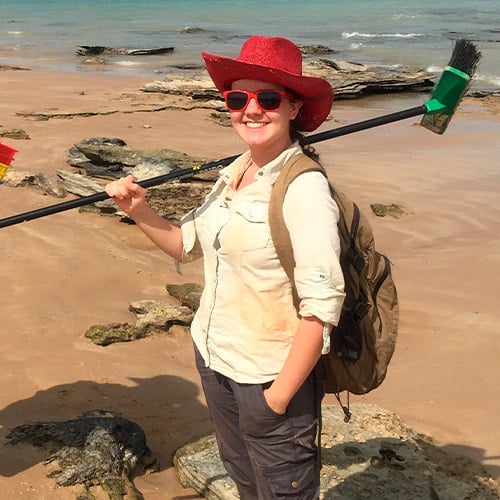
Philippa Chamberlain
Philippa Chamberlain undertook postgraduate studies at The University of Queensland in 2015, with research on the abundant sauropod tracks found in the Broome Sandstone. Her detailed evaluation of the ‘Paul Foulkes Sauropod Platform’ within Reddell Beach, provides information of variable track preservation and the sequence of track formation, and indicates that some of the Broome dinosaur trackmakers may have been gregarious.
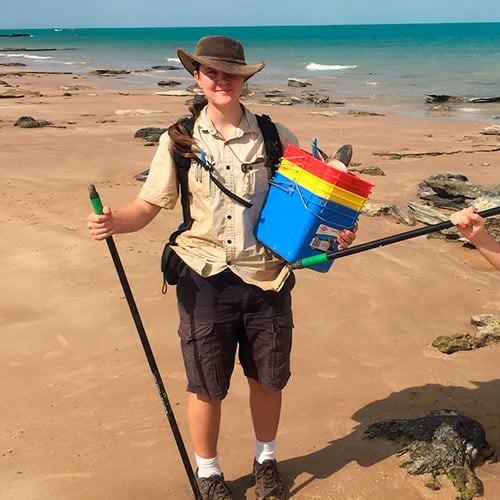
Sarah Gray
Sarah Gray graduated from the University of South Australia with a major in Mineral Geoscience. Sarah applied this experience and successfully completed postgraduate studies at The University of Queensland in 2015, providing new insights into the geology and palaeoenvironment of Reddell Beach. Sarah has visited Broome on three separate occasions for research purposes and will be publishing her findings soon.
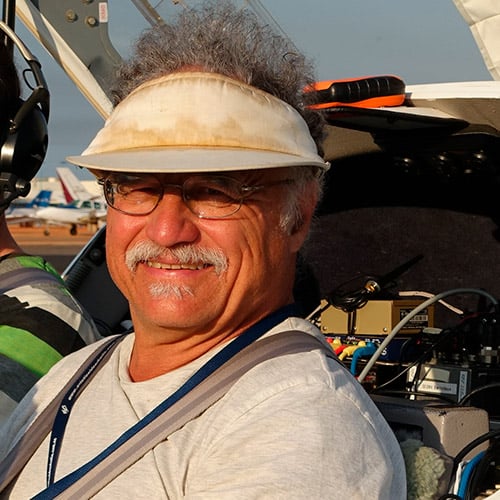
Professor Jorg M Hacker
Professor Jorg M Hacker is the Director of Airborne Research Australia (ARA) and Professor at Flinders University, Adelaide. Jorg’s research focuses on documenting the atmospheric boundary layer and the development of innovative instrumentation and measurement strategies using airborne platforms. Between 2014 and 2016, Jorg piloted ARA’s Diamond Aircraft HK36TTC-ECO-Dimona aircraft along the Dinosaur Coast to record the coastal topography, vegetation, rock platforms and dinosaur footprints using lasers, high-resolution photography and video, and hyperspectral scanners mounted to the aircraft.
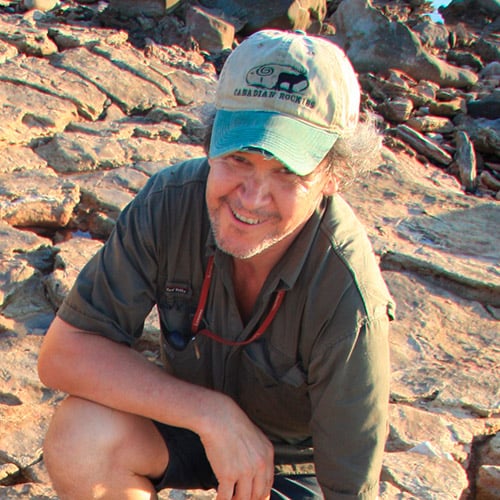
Dr Matt Herne
Dr Matt Herne is an Australian dinosaur palaeontologist, whose main research focus is on the plant-eating dinosaurs called ornithopods. Matt has also worked on sauropod dinosaurs in North America and helped to set up the new Philip J. Currie Dinosaur Museum in Canada. Between 2011 and 2017, Matt was involved in the documentation and interpretation of dinosaurian tracks in the Walmadany area, as well as the interpretation of environmental conditions when the rocks of the Broome Sandstone were deposited. Matt also helped devise methods for replicating dinosaur tracks on the intertidal reef systems.
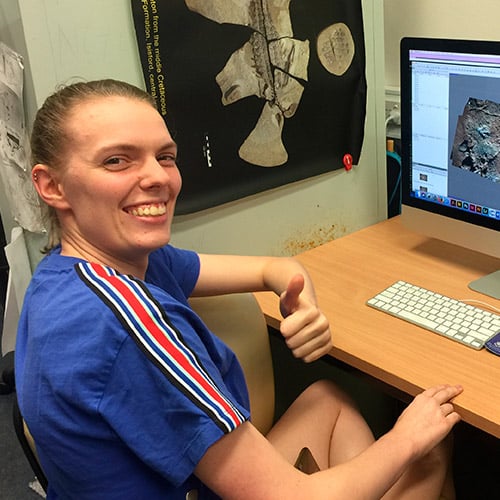
Booke Holland
Brooke is currently studying the preservation of theropod tracks in the Broome Sandstone for her Honours thesis at The University of Queensland.
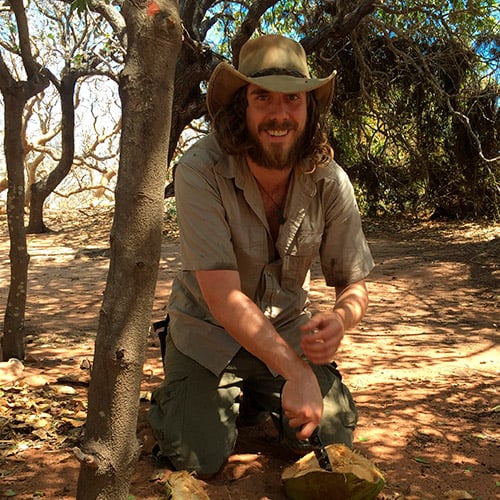
Dr Andréas Jannel
Dr Andréas Jannel completed his PhD on the biomechanics of the feet of sauropod dinosaurs at The University of Queensland in 2019. His research seeks to evaluate the hindfoot anatomy and function in order to reconstruct locomotor behaviours. As part of his project Andréas examined sauropod tracks in the Broome Sandstone, which include some of the largest dinosaur tracks anywhere in the world, providing crucial insights into how these extinct animals were able to reach gigantic proportions.
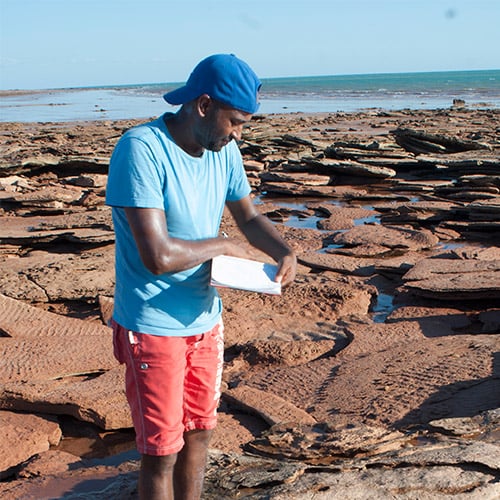
Jay Nair
Jay is a PhD candidate in the Dinosaur Lab at the University of Queensland, whose research focuses on the early evolution sauropod dinosaurs from the landmasses that once formed part of the southern supercontinent of Gondwana between 220–165 million years ago. He works on sauropod and near-sauropod fossils from South Africa, and closer to home, one of Australia’s most iconic dinosaurs, the early sauropod Rhoetosaurus brownei from the Middle–Upper Jurassic of Roma in southern Queensland. His insights into sauropod anatomy, evolution and behaviour have been central to the interpretation of sauropod tracks in the Broome Sandstone since 2011.
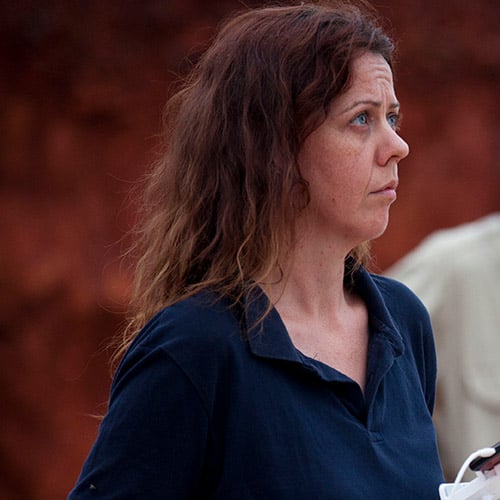
Linda Pollard
Linda Pollard is a part-time Research Assistant in the Dinosaur Lab at The University of Queensland. Since 2014, Linda has lead the casting and replication of dinosaur footprints in the Broome Sandstone, and piloted the UQ ‘Dino Drone’ for digital mapping of the tracksites.
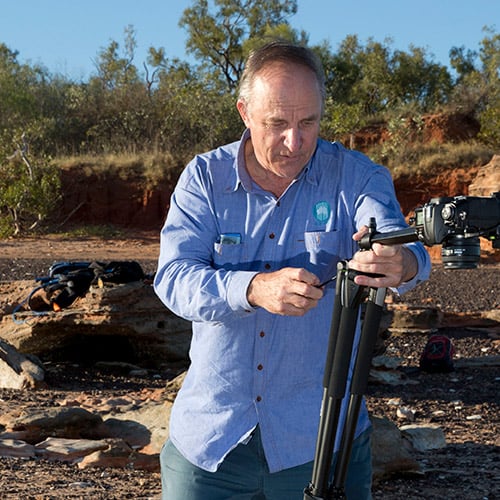
George Poropat
George Poropat is a physicist and independent research consultant who works in 3D imagery. Up until January 2016, he was based in the Mine Environment Images at CSIRO and helped develop hand-held photogrammetry techniques for the digital mapping of dinosaur tracksites in the Broome Sandstone.
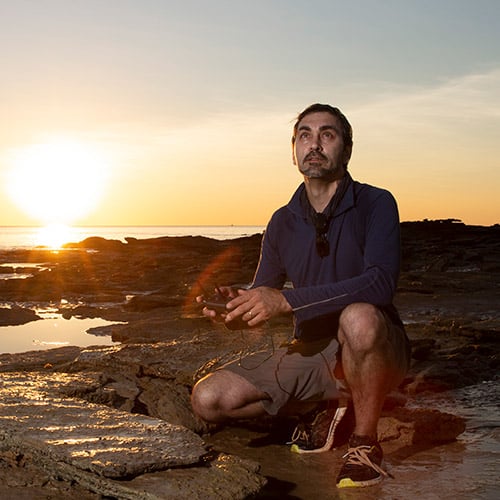
Dr Anthony Romilio
Dr Anthony Romilio has been studying dinosaur tracks at The University of Queensland since 2009. His research on dinosaur tracks in the Broome Sandstone began in 2011, and in that time, he has developed new 3D strategies to improve the track- and tracksite documentation. Anthony’s research of the Broome Sandstone has been directed towards understanding the track diversity and dinosaur foot evolution, as well as monitoring the erosion of the fossil tracks over time.
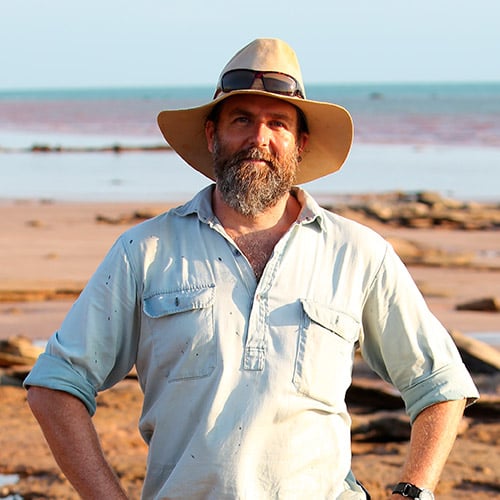
Dr Steven Salisbury
Dr Steve Salisbury is a Senior Lecturer in the School of Biological Sciences at The University of Queensland, where he is head of the UQ Dinosaur Lab. He is also Research Associate at the Carnegie Museum of Natural History, Pittsburgh, Pennsylvania, USA, Associate Editor for the Journal of Vertebrate Paleontology, and a Scientific Board member of the Jurassic Foundation.
Steve studied biology and geology at the University of Sydney, receiving the Edgeworth David Award for Palaeontology in 1993. He then moved to the University of New South Wales (UNSW), where he completed his Honours thesis on fossil crocodilians from Murgon, south-eastern Queensland. Continuing at the UNSW, Steve travelled to Germany and the UK to complete a PhD on crocodilian locomotor evolution. He returned to Australia in 2000 to pursue a life-long dream of searching for Australian dinosaurs and joined The University of Queensland in 2003 as a postdoctoral fellow.
Steve’s research focuses on the evolution of Gondwanan continental vertebrates, in particular dinosaurs and crocodilians. He is also interested in vertebrate biomechanics and using extant animals to better understand the anatomy, behaviour and evolution of extinct ones. In addition to the Kimberley, Steve conducts field-based research in Queensland, New Zealand and Antarctica.
Since 2010, Steve has been leading the scientific research on the dinosaurian tracks of the Broome Sandstone.
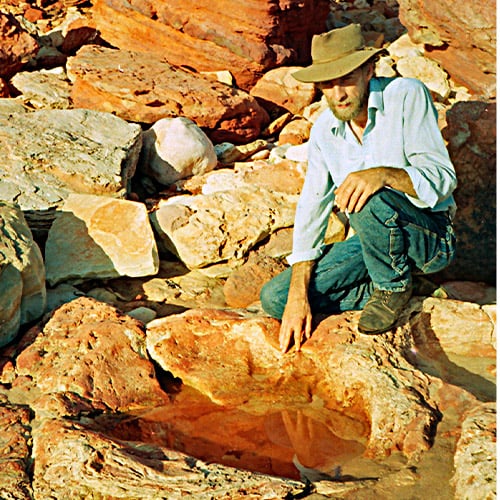
Dr Tony Thulburn
Formerly at The University of Queensland, Dr Tony Thulborn lead some of the pioneering research into the dinosaur tracks of the Broome Sandstone from the early ‘90s through to early 2000s, working closely with Prof. John Long (then at the Western Australian Museum), the late Tim Hamley (also at UQ) and the first person to recognised sauropod tracks in the Broome Sandstone, the late Paul Foulkes. Together with Tim and Paul, Tony published the first descriptions of Broome Sandstone sauropod tracks and their preservation. In 2012, he posited that some of the landscapes of the Broome Sandstone had been extensively remodelled by deformation resulting from sauropod activity.
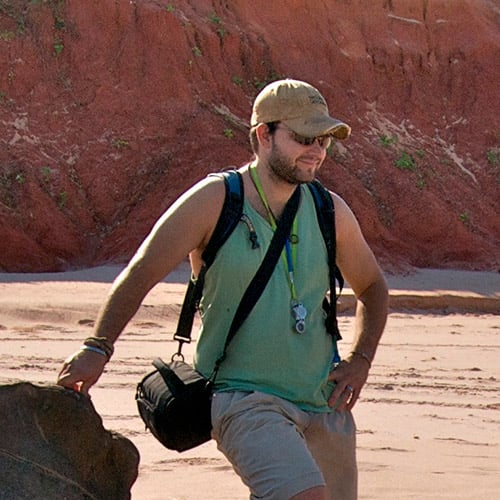
Dr Ryan Tucker
Dr Ryan Tucker’s research expertise draws upon a background in sedimentary environments, chemical tracers of sedimentary provenance (e.g., detrital zircon geochronology; Lu-Hf isotopes), and palaeontology, to address questions about the fossil record and the evolution of sedimentary basins. Between 2011 and 2017, Ryan lead the research interpreting the geology and palaeoenvironment of the Broome Sandstone.
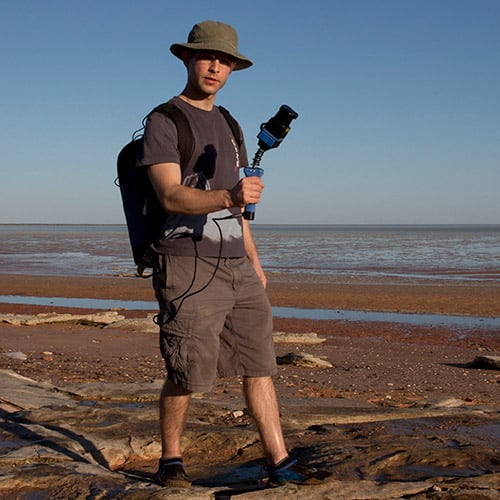
Dr Robert Zlot
Dr Robert Zlot has been working in the field of robotics research since 2000. While working at the Autonomous Systems Lab at CSIRO, together with Dr Michael Bosse, Rob developed solutions for three-dimensional mapping using laser-scanning technology. One of these solutions is the Zebedee 3D Mapping System, a lightweight device that efficiently builds a map of an environment as it is carried through it. Between 2014 and 2017, Zebedee was used for digital mapping of tracksites along the Dinosaur Coast. Rob is now a Principal Research Scientist at Uber.
